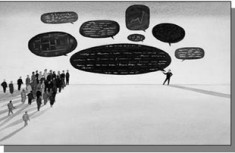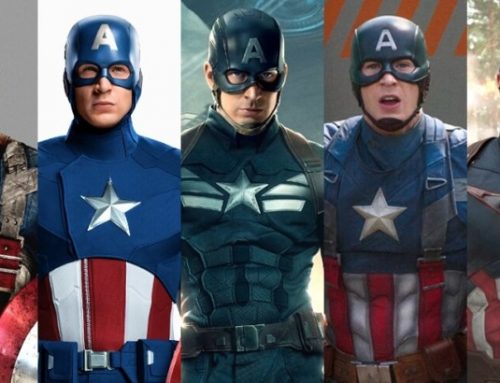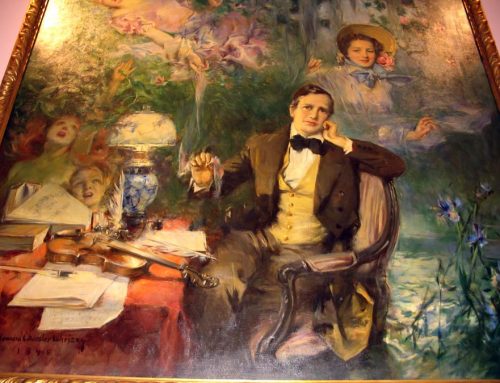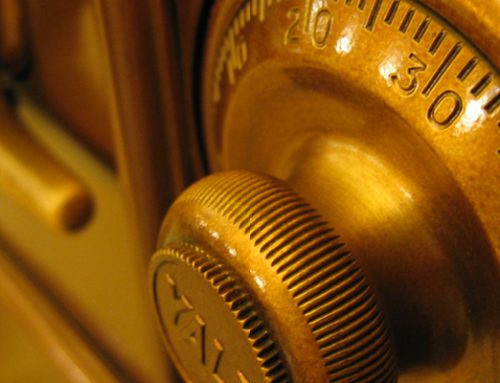This article first appeared in the print edition of Law on the Row, Volume 2, Issue 1, on March 21, 2001
Hillary Rosen, president of the Recording Industry Association of America (“”RIAA”), called RIAA’s legal victory over Napster, the mega-MP3 file trading site, a “clear victory for all creators.” While the efforts of the record industry watchdog organization should certainly be applauded, it should be noted that the victory against Napster is a slow ball compared to the spit balls being thrown at the creative industry by the likes of Gnutella and FreeNet. This article compares these two file swapping services to Napster and examines the Napster opinion for insight into how the courts might deal with these next generation peer-to-peer client software programs.
The Napster Opinion
The RIAA filed suit against Napster in December 1999 claiming vicarious and contributory negligence. In July 1999, Judge Marilyn Hall Patel of the United States District Court for the Northern District of California issued a preliminary injunction against Napster. The ruling was immediately appealed to United States Court of Appeals for the 9th Circuit.
A recent, unanimous ruling by a three-judg e panel of the 9th Circuit affirmed the lower court decision and found that Napster, which allows users to exchange music free over the Internet, contributes to the infringement of copyrights held by the plaintiffs. The panel specifically found that Napster users (1) infringed plaintiffs’ rights of distribution by uploading file names to the collective index and (2) infringed their rights of reproduction by downloading files containing copyrighted music. Napster was deemed a contributory infringer because its owners had actual knowledge of pirated music in Napster’s index.
e panel of the 9th Circuit affirmed the lower court decision and found that Napster, which allows users to exchange music free over the Internet, contributes to the infringement of copyrights held by the plaintiffs. The panel specifically found that Napster users (1) infringed plaintiffs’ rights of distribution by uploading file names to the collective index and (2) infringed their rights of reproduction by downloading files containing copyrighted music. Napster was deemed a contributory infringer because its owners had actual knowledge of pirated music in Napster’s index.
The appellate panel rejected Napster’s fair use defenses, including (1) that the users were merely “sampling,” i.e., making temporary copies of the work to determine their desire to purchase it; and (2) that the users were merely “space-shifting” the product they already owned by transferring it from audio CD to another format. The court affirmed Patel’s holdings regarding these issues as well.
With regard to sampling, the District Court had concluded that the more music a user downloads, the less likely that user is to purchase the desired artists’ albums. Secondly, the court observed that even if the audio CD market it not harmed by Napster’s infringement, the infringement has adverse effects on the developing digital market from which the copyright owners are entitled to benefit. The 9th Circuit agreed.
As to “space-shifting,” Napster appealed to Sony v. Universal Studios, 464 U.S. 417 (1984) and RIAA v. Diamond Multimedia Systems, 180 F.3d 1072 (9th Cir. 1999) for analogy. These cases involved the alleged infringing uses of VCR’s and MP3 players. Napster claimed that its file sharing technology merely allowed for the “space-shifting” of musical compositions and sound recordings much in the same way as a VCR or MP3 player allows a user to “time-shift” programming or “space shift” music. Napster argued its usage of the copyrighted music was a similar fair use.
The appellate panel noted, however, that the Sony and Diamond cases are not applicable because the legal theory of “shifting” as applied to VCR’s and MP3 players did not “simultaneously involve distribution of the copyrighted material to the general public … [but rather] exposed the material only to the original user.” The 9th Circuit pointed out that Napster made the material available not just to the original purchaser, but to “millions of other individuals,” and therefore upheld Judge Patel’s refusal to apply the fair use rulings in the Sony and Diamond cases to Napster’s situation.
The appellate ruling affirmed most of the pertinent rulings by Judge Patel and sent the case back to her with instructions to narrow the preliminary injunction to prevent Napster from being used to exchange unauthorized songs, but not songs from new artists used with their permission. The appellate court further said that such an injunction must, at the same time, be fashioned to respect the technological limitations that Napster faces in policing its service.
Napster, Gnutella & FreeNet
Before applying some of the court’s holdings to Gnutella and FreeNet, it is first important to understand the similarities and differences between these peer-to-peer software clients and the services offered by Napster.
Gnutella is a software package that is downloaded and installed on individual computers, much in the same way as Napster. In its own words, Gnutella is “basically a mini search engine and file serving system in one.” It functions in much the same way as Napster. Once you install the software, you can type in a search for information, and the Gnutella client will seek out that information on the “GnutellaNet,” i.e., from among the community of users in closest proximity to the user making the request, which usually numbers approximately 10,000 users. The request for information is then transmitted from user to user until it finds the information, at which point it routes its way back through the network of users to the original requester.
FreeNet functions in much the same way as Gnutella. Its developer describes FreeNet as “an information publication system similar to the World Wide Web.”” To use FreeNet, users simply install a piece of server software on their computers and separate client programs that allow insertion and removal of information from the “network.” The programs are based on an open protocol developed by Ian Clarke, which means that specialized applications can be written to perform unique tasks by anyone with a minimum amount of programming knowledge.
The differences between Napster and these second generation file-sharing programs are more significant, however, than the similarities, particularly with regard to the legal precedent established in Napster.
For starters, Gnutella and FreeNet are not centralized, as was Napster. Napster maintained a centralized server containing an index of all user files. This fact was significant in the 9th Circuit’s opinion. It opined that Napster “has the ability to locate infringing material listed on its search indices, and the right to terminate users’ access to the system. The file name indices, therefore, are within the ‘premises’ that Napster had the ability to police.”
Gnutella and FreeNet, in contrast, are based on protocols, or software technology, rather than a model of providing services. Every user who installs the kernel software becomes, in essence, a “file server” on the ad hoc network and, thus, has the ability to control the content of his or her proximate network of users. It is difficult, if not impossible, with the Gnutella software, to determine who sent a request for information. It is passed from user to user, and not even the original recipient of the request is certain that the requester with whom he or she communicates is the original person making the request.
Furthermore, FreeNet claims that information on its system is distributed from server to server in such a way that it is difficult to determine where a particular piece of information is at any given time. This feature makes it nearly impossible, according to its developers, to forcibly remove a piece of information from the “network.”
The best framework to facilitate understanding of Gnutella and FreeNet is to think of them as a “super chat rooms.” Running the Gnutella or FreeNet software program, a user has the ability to send out a request for files or information to thousands of other users on the Internet instantaneously and simultaneously. Those people, in turn, resubmit the request to the users connected to their “network,” i.e., their buddies, and so on until the requested information is located and a “message” is returned to the original requester that the information requested is available.
How will the Napster opinion apply to Gnutella & FreeNet?
As indicated earlier, the Napster decision is as important for how it applies to Gnutella, FreeNet and other later generation file-swapping technologies as it is in how it applies to Napster. While the RIAA may have won the battle, it could very well end up losing the war against these more nimble and elusive second generation peer-to-peer software clients!
In its examination of whether Napster was a contributory infringer, the 9th Circuit made several interesting observations worthy of note in this regard. The court recognized that a computer system operator can be held vicariously liable for copyright infringement if he or she is specifically aware, or is made aware, that infringing material is on the system and fails to purge it. But the court clarified that “absent any specific information which identifies infringing activity, a computer system operator cannot be liable for contributory infringement merely because the structure of the system allows for the exchange of copyrighted material.
Most significantly, the court made it clear that it imposed contributory infringement on Napster because of its owners’ actual knowledge of infringing material on the server and his failure to purge it. To make the point absolutely clear, the 9th Circuit stated that “[t]he mere existence of the Napster system, absent actual notice and Napster’s demonstrated failure to remove the offending material, is insufficient to impose contributory infringement.”
 In the case of Gnutella and FreeNet, the “computer system operator” is an amalgam of literally thousands of users of the software package – not one centralized server. Each computer in the amalgam serves an equal function in the structure of the network. To further complicate matters, the conglomeration of users is in a constant state of random flux as users sign on and off the system. There is no centralized source of information, no centralized server, and no centralized administration. In short, there is no one to sue! (It should be noted, however, that whenever a file is transferred on these systems from one user to another, it necessarily passes through an Internet Service Provider, or ISP, which keeps logs of such transactions and can track the recipient’s identity — thus providing, at least, a minimal target).
In the case of Gnutella and FreeNet, the “computer system operator” is an amalgam of literally thousands of users of the software package – not one centralized server. Each computer in the amalgam serves an equal function in the structure of the network. To further complicate matters, the conglomeration of users is in a constant state of random flux as users sign on and off the system. There is no centralized source of information, no centralized server, and no centralized administration. In short, there is no one to sue! (It should be noted, however, that whenever a file is transferred on these systems from one user to another, it necessarily passes through an Internet Service Provider, or ISP, which keeps logs of such transactions and can track the recipient’s identity — thus providing, at least, a minimal target).
The Gnutella and FreeNet protocols are much more similar to the relevant facts concerning the products in the Sony VCR and the Diamond MP3 cases.
In the Sony case, for example, the court refused to impute the requisite level of knowledge to Sony simply because it made a product that was capable of both infringing and “substantially noninfringing uses.” The VCR is used to play pre-recorded tapes, as well as to record copyrighted programming for viewing at a later time, i.e., time-shifting. This same rationale was used in the Diamond case where an MP3 player can be used by the rightful owner of musical compositions to “space-shift” the songs from one format to another. These types of usages, the Supreme Court ruled, are fair uses and not infringements.
Like the VCR and the MP3 player, Gnutella and FreeNet are types of technology capable of both infringing and “substantially non-infringing uses.” Both protocols were established for the express purpose of freely sharing information. The existence of a non-infringing purpose is an issue the 9th Circuit was extremely concerned about in the Napster case, and the argument is even stronger in favor of Gnutella and FreeNet than it was for Napster. As an example, the 9th Circuit expressly stated that it refused to “impute the requisite level of knowledge to Napster merely because peer-to-peer file sharing technology may be used to infringe . . . copyrights.” The court went so far as to disagree with the lower court’s ruling that Napster had failed to demonstrate that its system is capable of commercially significant non-infringing uses, holding that this ignored the system’s capabilities.
The issue of non-infringing uses is the crux of why Gnutella and FreeNet will have greater success defending any infringement action brought against them by the big guns. Napster was designed, from the beginning, for the exchange of music. While it may be argued that it has other useful functions, its founders acknowledged purpose was the illicit exchange of copyrighted material. Gnutella and FreeNet, on the other hand, are frequently used for much more than merely transferring MP3 files — they are also used to exchange various types of non-infringing information such as recipes, clip art, photographs, word processing files, etc. The basic design of Gnutella and FreeNet lends itself to the sharing of information. Neither provide a “service,” per se, but rather offer a method for exchanging information freely with other computer users. The developers’ own comments about their products on their websites make that abundantly clear. Will this be enough to shield them from liability against a copyright infringement action? If the Napster opinion is any guide, and it is, then it appears that these second generation software packages will fair better than their more well-known first cousin.
Considerations for the Future of Online Delivery of Music
While the industry may have hit a home run against the slow ball thrown by Napster, the game is only in the 1st inning, and it appears that Gnutella and FreeNet are capable of throwing no-hitters! As long as there are international computer networks, skilled hackers and determined computer nerds in this world, there will be ample avenues for stealing intellectual property through exchanges over peer-to-peer networks. Even in the absence of Napster, if a person wants to download music without paying for it, he can do so, and there is not much the RIAA or anyone else can do about it.
The fact is, there have always been and will always be people out there who will make choices that are in direct conflict with current social morals and dictates — and there will always be people with the capability and the desire to “”steal” copyrighted music and, for that matter, other materials. In order to track down and prosecute such renegades who use protocols like Gnutella and FreeNet to distribute pirated music, the RIAA will have to become something akin to an “Internet Police Squad,” scouting ISP records for the names and identities of people using their system to receive file transfers of unauthorized music, and then suing them individually, one by one. This daunting task would not only consume much of the organization’s time and resources, but would present significant legal issues and barriers, as discussed earlier.
Ms. Rosen perhaps summarized it best in her remarks to the press following the Napster decision, “the business model built on infringement is not only morally and legally wrong, but it is also a threat to the development of the legitimate online music market.” Given the choice, however, studies indicate that most people generally would prefer to make the right and moral decision. In this case, specifically, that assumes that most people would prefer to reward entertainers and songwriters by paying for the music they love.
Assuming that conclusion to be correct, the industry’s efforts would perhaps be better spent in educating people about the value of creative efforts required to produce a musical composition, how much it costs to make a sound recording, and how being paid motivates creative people to produce creative product. Their efforts might be better spent developing a business model that demonstrates a lack of greed and thereby encourages those who really want to buy their music by pricing it more in line with the perceived value. At the same time, such a pricing structure would be a disincentive to the hackers by making the programming efforts involved in pirating the music more trouble than they’re worth. To revise an old adage, a byte of prevention is worth a gigabyte of cure!





